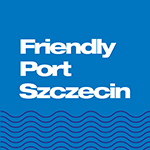Sailing is a very traditional, conservative, and etiquette-oriented activity. By far, it is not just a way to move from one port to another. Regattas provide ample opportunities to meet people representing different cultures. Although cultural differences might be significant, there is no need to worry, as the etiquette is common for all people participating. Many of customs and traditions originate back to the era of tall ships.
The flag
For seafarers, the flag is a symbol of particular respect. Thus, it is good to know how to behave once we are close to it.
The flag is hoisted up the flagstaff , mizzenmast or the peak halyard . The place for the flag depends whether the ship sails on a power engine, sails or it is moored in the port. When a tall ship uses an engine or stays in the port, the flag is raised on the flagstaff. When under the sails, the flag should be at the mizzenmast, and in the case of fore-and-aft sails on the halyard.
Every liaison officer should remember that the flag is raised at 8:00 o’clock sharp. On navy vessels and tall ships, it usually coincides with a crew gathering on the deck to check the crew status and announce daily orders. On smaller yachts, the flag is usually hoisted by an appointed crew member in the morning. Sailors took over the flag etiquette from the navy. Although simplified, it is still impressive, especially for people with little knowledge about sailing. The procedure for the lowering of the flag is much less official. A crew member or the sailor on the watch take the flag down on the sunset. Although this is not accompanied by any crew gathering, all people on board should turn toward the flag and stand straight (people at quay should also do the same), whereas civilians wearing hats should take them off. In some countries, raising and lowering of the flag is marked with a shot of a cannon. When the flag is raised or lowered, you can also hear the bell being struck, as the bell has been used on board of tall ships to mark every full hour. Thus, when the flag is hoisted, the bell is struck four times. During sailing camps, a frequent mistake is to have four strikes of a bell on hoisting the colours or the national flag at a different hour than 8:00 o’clock. The bell is used to mark the passage of time just as a carillon.
How should we behave when we are near a tall ship when the flag is hoisted or lowered? We should take the hat off and turn towards the flag.
The entering of a ship to a port is also an important moment. Once we reach a point at which the gangway touches the deck, we should take our hat off and turn toward the flag and bow slightly. It does not take much effort, and it is much appreciated by the captain and the crew. This is how we can show our good manners.
Salutation to or with the flag?
In the realm of tall ships and yachts, the honours paid to the flag originate from the marine etiquette adopted from the navy. It is primarily based on symbols, customs and norms shared by all seafarers. The etiquette started to develop probably when human set out to explore seas and oceans. Throughout centuries, these customs evolved, influenced especially by the navy of the then maritime powers. Then, the customs translated into specific rules that in a simple and easy manner enable to communicate information and convey emotions. It all depends on how much we are familiar and follow these rules.
Time to answer the question in the heading: “Salutation to or with the flag?”. In general, a “salute” is obligatory in uniformed services, the regulations of the navy define how honours should be paid when civilian ships are involved. Servicemen salute while wearing their headgear, whereas civilians pay honours by bowing their heads. Therefore, we may assume that a civilian vessel may salute in a strictly military sense. Honours are paid by the “salutation to the flag”. Although sailor’s manuals refer to it as the salutation with a flag, it is not fully in line with the Navy Regulations, especially in the official Polish sailing tradition.
The salute with a flag is equally important. When is it necessary? Yachts should salute to navy vessels, sail training ships, monuments and venues commemorating soldiers who fought for their country, as well as to grandstands or vessels where representatives of states, “crowned heads”, and ambassadors are present. Customarily, they also pay honours to sail training ships when sailing past them. Sailors used to express their farewell and welcome their clubs when they commence or come back from their voyages. There are places in Europe and in the world where yachts, regardless their origin, are welcomed with their national anthem, ship’s anthem, and sometimes also the salute with a flag (e.g. Kiln Canal or Wedel Port, a large yacht port near Hamburg). Since 2007, during sailing events, Szczecin welcomes ships (tall ships, navy vessels, and yachts) with their national anthems and a flag salute at the Pilot Station.
How to salute with a flag
According to sailing traditions, ships should salute to navy vessels that they come across at sea, and they should do it regardless the country of origin of the navy vessel. This can be done by making the flag half-masted when the ship is at the level of the navy vessel stem . The navy vessel responds by lowering their flag to half-mast and immediately hoisting it up to its original position. The ceremony is called the salute with a flag.
It is a pity that not everyone respects the tradition, for the tradition defines our identity. It is a powerful factor connecting people in our community. These rules are particularly important in international relations.
“Fine feathers make fine birds”
When we see something for the first time it makes an impression on us. They say: you can make the first impression only once. People make opinions about us at the first contact based on our looks, and that is the fact. The way they see us during The Tall Ships Races, is the way they perceive organisers of the event.
Neat appearance, suitable uniform, cleanliness, pleasant scent (that does not make flowers wilt when we pass), the way we speak (we should use as few colloquial phrases as possible) and a positive attitude toward others will facilitate your first contact with your “subordinates” and for certain the first impression will be better.
[1] rigging – a system of ropes.
Ropes that supports masts are referred to as a standing rigging (shrouds, stays). Some ropes are temporarily tightened or loosened depending on the wind direction and these are called semi-standing rigging (now rarely used). Another type of rigging include ropes used to control the position and shape of sails, and these are referred to as the running rigging (e.g. halyards, downhauls, braces, counterbraces, sheets);
[2] Bowsprit – a spar extending forward from the vessel’s prow. It is slightly elevated depending on the inclination of the foredeck. It makes the vessel longer and enables fitting more stays and sails called forestays;
[3] Figurehead – a wooden decoration on the bow of a large sailing ship; it is a richly decorated wooden sculpture, often covered with polychromy and placed on a forecastle, at the peak of the foreship section. It has been usually made in the shape of a man, an animal, or an allegoric creature and referred to the name of the vessel;
[4] Optimist – a small, single-handed dinghy designated for children and adolescents up to 15 y.o. It is a racing yacht (not very comfortable one). The cockpit occupies a half of its size. The sailing boat is usually made of glass fibre, or sometimes timber.
[5] Omega – a yacht without a cabin. Omega was designed in the occupied Warsaw during the war. It was made to provide sail training to the Home Army servicemen who transported goods and soldiers across the Vistula River. After the war, the government expressed their interest in its construction, and Omega was produced and sold exceptionally well. Sailing boats of this type have been used for training. It is up to 6.20 m in length, with the sail area of approx. 15m2. It is actually the most popular type of yacht in Poland (designed by Juliusz Sieradzki). It is very convenient for leisure sailing due to its limited draft and a spacious cockpit.
[6] Flagpole – a pole at the stern of a sailing ship, capped with decoration and used to raise a flag
[7] Gaff – a top spar to hoist a square sail. It consists of a throat, a part which slides along the mast, and a peak located on the opposite side.
[8] Stem – a part of ship’s structure on the extension of the keel; in the front it turns to a stay and in the back
a stern-post.





